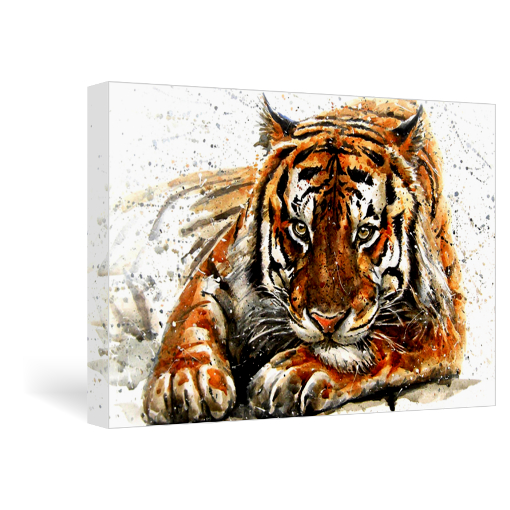Don’t let your prints fade away. Fading, discoloration and even damage of any colored surface can be a problem if proper care and precautions are not taken. This is not just true with prints but any surface with an image even if it is archival. The rate of fading and discoloration depends on the media the image is on and the pigments or properties that make of the colors. Since we are more concerned here with prints, whether it be a photo or art reproduction, there are two main influences we should look at: external and internal.
External Elements that Can Harm Prints
External things that we can look at is everything from exposure to light as well as atmospheric conditions. With light we are talking primarily about sunlight. Any light can affect a print but especially sun light, which contains harmful UV rays which overtime do anything from cause colors to lose their vibrancy to actual color alterations. Fortunately, this is one thing that you can easily control. Keep your prints away from direct exposure to sunlight when possible. It’s almost impossible to block all UV rays since some level will likely be present in almost any room unless there is total darkness but the potential of those having a negative affect are likely not to be noticed for many years. A helpful solution is to use a frame glass / glazing that has UV inhibitors that help block the UV rays.
Atmospheric conditions and their ability to damage a print is going to rely more on the type of print. If you place a print on canvas or paper in a room which gets a lot of humidity and the media is a more absorbent such as with cotton-based papers, humidity can seep in over time. This can do anything from causing the media to warp or loose it’s tautness and possibly lead to discolorations due to the inks exposure to the water molecules the inks might come in contact with. One solution is to make the print watertight. The best way to do this is to place it in a frame behind glass and make sure the backing is waterproof. At FinerWorks, we do something a little different for our framed paper prints we make than many framers. Rather than Kraft paper we use Tyvek which is a waterproof material that seals the print away from potential damage humidity can cause. Of course, you will want to also include glass / glazing when possible so that you have a perfectly sealed print.
Other atmospheric conditions can include temperature. Sometimes it may not affect the paper or media as much as the other things that make up a print. Very cold conditions can inhibit a prints ability to breathe. Sometimes the paper becomes more brittle and less pliable. Heat on the other hand can cause warping, especially when high levels of humidity are also involved.
I also wanted to mention handling. Some types off prints are going to be more prone to being damaged while others. Improper handling can include scratches to even fingerprints. It is important for artist and photographers to understand the properties that make up their prints, what they can be susceptible to damage wise and provide their buyers general instructions on their care. I have even heard of photographers and artists providing their clients a pair of white gloves with their orders to imply the importance of care when handing their prints whether it be on metal or an unframed giclee.
Internal Elements that Can Harm Prints
Internal conditions primarily are going to be the result of the paper or canvas and inks. A color laser print is not likely to be on archival materials nor will the inks consist of archival properties. When a print or inks due are not archival in nature they do have the potential to actually have harmful ingredients. For instance a paper that is not archival may be too acidic causing the materials to break down quickly over time as well as affect the color pigments. The inks, if a dye based inkjet print or laser toner may also fade pretty quickly.
Fortunately the inks, papers and canvas we use at FinerWorks are archival grade so prints of this nature are not going to see the effects of time at the same rate. On that premise it is always advisable to seek out a printer that uses archival materials and inks for your prints.
Ultimately archival grade materials are archival because they can better withstand some of the external conditions, most specifically light. The inks will have UV inhibitors and the papers will not have bleaching agents or utilize more advanced bleaching agents to keep the surface from yellowing.
Other types of prints, while not technically archival may be very durable and resist external or internal pressures. For instance, a metal print, while it still susceptible to long term UV exposure generally will not be harmed by humidity or warp due to high temperatures.
Order Giclee Printing on Canvas
Printed using some of the highest archival standards in the industry, your photos or artwork will last for decades to come.


Hello!
As a print artist I have utilized your services several times and I do love the paper choices and the quality of service toward the Art world rather than just running off enlarged snapshots for personal decor purposes. However, one problem I realized was when I ordered two matted/framed/sealed prints…which looked great…but each was sealed so well I was afraid to take apart the whole thing so I could hand-sign the print within…which is a requirement for selling “Art.”
Currently, I see that Finerworks is running a framed print sale. BUT, unless I purchase a print, sign it and then ship it back to you to be framed…probably not financially feasible…I’m afraid that purchasing framed prints is not a viable option for this kind of art work. No?
As a print artist dealing with galleries/museums/buyers, etc…the question is always asked, “But do you own the only file so that other copies cannot be printed by other people? How can we be sure you printed only the number of prints you claim? Etc.” Obviously, the more prints, the less value.
Prints have always had that stigma, but in the old days, the original block or plates for lithos, etchings, etc….could be easily destroyed thus ensuring that a limited amount was printed. Many times, the artist was present at the printings to assure quality and limitations, etc. Of course, original signatures to authenticate the works were needed as well….but with many artists, especially the aging Dali who signed blank sheets of paper, forgeries were easily accomplished after tons of prints were run off by criminal printers.
Now, we have digital printing and files that have been sent to print shops often far away to be made by strangers…and I always have to shrug when buyers and gallery owners inquire if I have some sort of assurance that more copies aren’t being printed elsewhere. Unless an artist purchases his/her own print shop with all the necessary experience and equipment needed to make their own prints.. or they are present at a print shop when the print is made….I guess there is no assurance that if their work is liked by a printer unknown to them…that printer has the file and can be printing up as many copies as they like in any size…even if they don’t personally like the work but can make money off of it….especially if the artist becomes well known and high-priced in the Art World.
Is there any kind of assurance that this can’t happen? Or, is that just the nature of the beast and artists must live with the fact that digital prints cannot be protected? Is there any sort of copyright, or invisible or visible stamp… or even signed insurance from print shops that only the agreed amount of prints were printed…which can be presented as proof to a buyer? Perhaps there is some new technology on the horizon that can be added to the print to assure that it is original?
In the meantime….having fought the stigma of being a digital artist since the late 1980s….a stigma presented mostly by fellow artists who still work in the traditional world…it doesn’t look like “computer” prints are going to be accepted as legit Art any time soon…unless it’s a big time artist like Jeff Koons who sometimes experiments in this field and can prove its authenticity.
But for the rest of us who are strictly digital artists….? I’ve shown my work in museums around the world….but mostly in digital art shows and even then it’s often viewed as an oddity…or even less, as posters to be sold in the gift shop rather than serious works to be hung next to the “real” artists.
Of course, that won’t stop me…but it’s been awhile and, unless I am totally ignorant of what I’m talking about….I hope there is a solution to be found to assuring authenticity to digital works in the years to come. There are a lot of works in my files waiting to see the light of day! (OK we don’t really want them in sunlight)